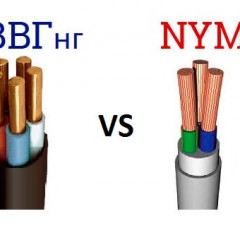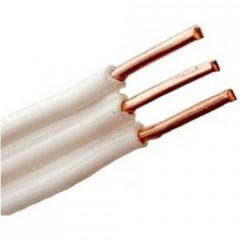What is the difference between GOST cable and TU?
What's the Difference?
A normative document containing a list of technical requirements for any product (in particular, for conductive and cable products) may be GOST (state standard), or TU (technical conditions). What is the difference between these documents and what is better to choose?
The State Standard (GOST) is developed by government agencies and is currently approved by the Interstate Council for Standardization, Metrology and Certification. The subject of state standardization is usually products of intersectoral purpose. Technical specifications (TU) are created by the manufacturer and approved by the ministry of the relevant industry.
The heyday of production standardization came in the Soviet period, when all enterprises were state-owned. Any products had to meet the standard. There was a hierarchy headed by state standards (GOST), industry standards (OST) were ranked lower, technical specifications (TU) were the youngest in this structure. With the collapse of the USSR and the emergence of a large number of private-owned cable manufacturers, the old quality control system collapsed.
Certification of any product (including wire) for compliance with GOST is a costly undertaking and requires compliance with a number of bureaucratic procedures. Of course, all costs incurred in this case are included in the cost of the cable. The difference between the certification procedure for technical specifications is that it is much simpler and cheaper, which is better for the manufacturer. On the one hand, it can be assumed that a cable certified according to TU should be cheaper than a cable according to GOST. But the difference lies in the fact that the manufacturer makes up the technical specifications, which most often leads to a decrease in product quality. From this point of view, it seems that it is better to choose a cable that is certified according to GOST, since in the development of this document, unlike the technical conditions, uninterested state bodies took part, although in the current conditions the presence of a state certificate, unfortunately, does not guarantee high quality product.
Standardization received a new impetus after the creation of the Customs Union, with the creation of which the technical regulation “On the safety of low-voltage equipment” appeared. In accordance with this document, at present, all cable products are subject to certification for compliance with GOST. This applies to manufacturers of all forms of ownership of the EAEU member countries.
Which is better to choose?
From a practical point of view, if you want choose cable for electrical wiring, it’s completely insufficient to focus solely on which regulatory document (standard or technical specifications) corresponds to its technical parameters. We highlight the most important points of this process:
- Before buying a conductor product, you must obtain information about its manufacturer;
- on the manufacturer’s website make sure that there are certificates confirming the conformity of the goods with GOST or TU;
- request a certificate of conformity from the seller of the product;
- it is better if the bay or drum on which the conductor products are supplied has the manufacturer's labels;
Using these simple steps, you can easily distinguish a GOST cable from a TU. In the absence of the ability to determine when and by whom this guide was released, it is better to refrain from buying. In extreme cases, you can do the following:
- Visually assess the condition of the wire insulation. If there are traces of long-term storage, especially in the sun, which is best determined by the presence of fragmentary changes in color and texture of insulation (for example, it has become rough and brightened in places), it is strongly not recommended to purchase a cable.
- After bending the cable, inspect the bend for microcracks that may occur on a poor-quality dried shell.
- Measure the diameter of the current-carrying core. To do this, you can use the caliper. According to the obtained value, we calculate the cross-section of the core according to the circle area formula. If the core is multi-wire, the diameter of one wire is measured, the cross section is calculated and multiplied by the number of wires in the core. Learn more about how to determine the cable cross section, we told in a separate article.
We also recommend watching a useful video on the topic:
That's all I wanted to tell you about this issue. We hope that now you know what GOST and TU cable are, what is the difference between the two manufacturing standards and what is better to choose!









the information presented today is irrelevant and is more misleading than helping the consumer. in particular, as of 2017 All power cables up to 3 kV are subject to mandatory certification for compliance with the requirements of TR TS 004/2011, compliance with specific GOST and, moreover, TU can only be confirmed on a voluntary basis.
There is still a nuance: according to current standards, the requirements of technical specifications can not contradict the requirements of current GOST for this type of product. thus, TU (at least in the cable) cannot be a tool for legalizing counterfeit goods.
in any case, a product manufactured in accordance with TU from a bona fide manufacturer will always be better than that produced supposedly "in accordance with GOST" from a one-day scam.
what to do? to buy goods from trustworthy legal manufacturers in places of trustworthy manufacturers (in a place worthy of trust they should know this, otherwise, by running from there).